The Asia Cloud Computing Association (ACCA) developed a Cloud Assessment Tool (CAT) to help users define their cloud application requirements and assist providers in presenting standardized service offerings. The framework categorizes operational performance characteristics across eight categories and establishes four service levels, promoting clarity and reducing subjectivity in cloud solutions. The document, intended for stakeholder feedback, aims to enhance the framework's utility and encourages collaboration for its further development.

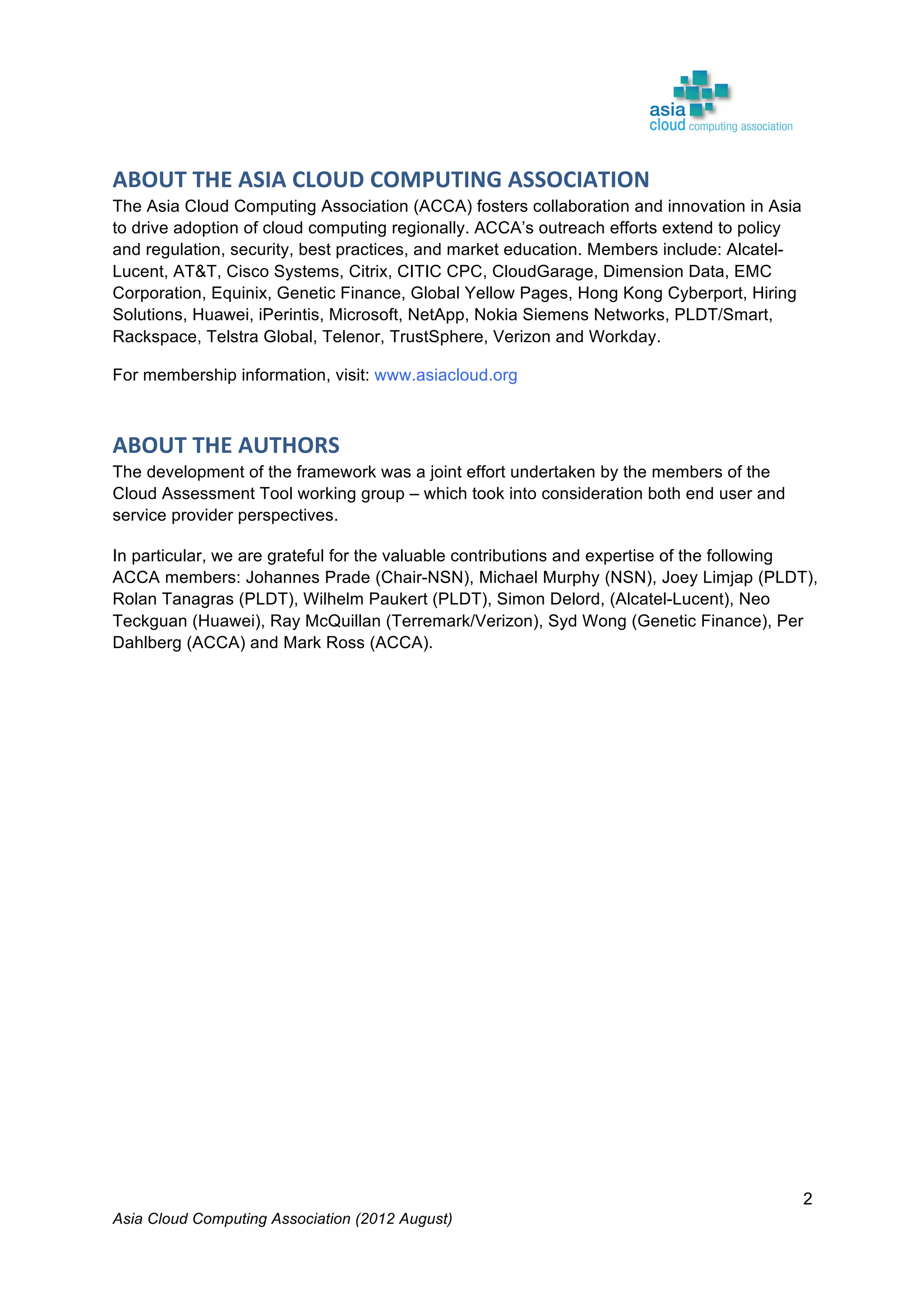
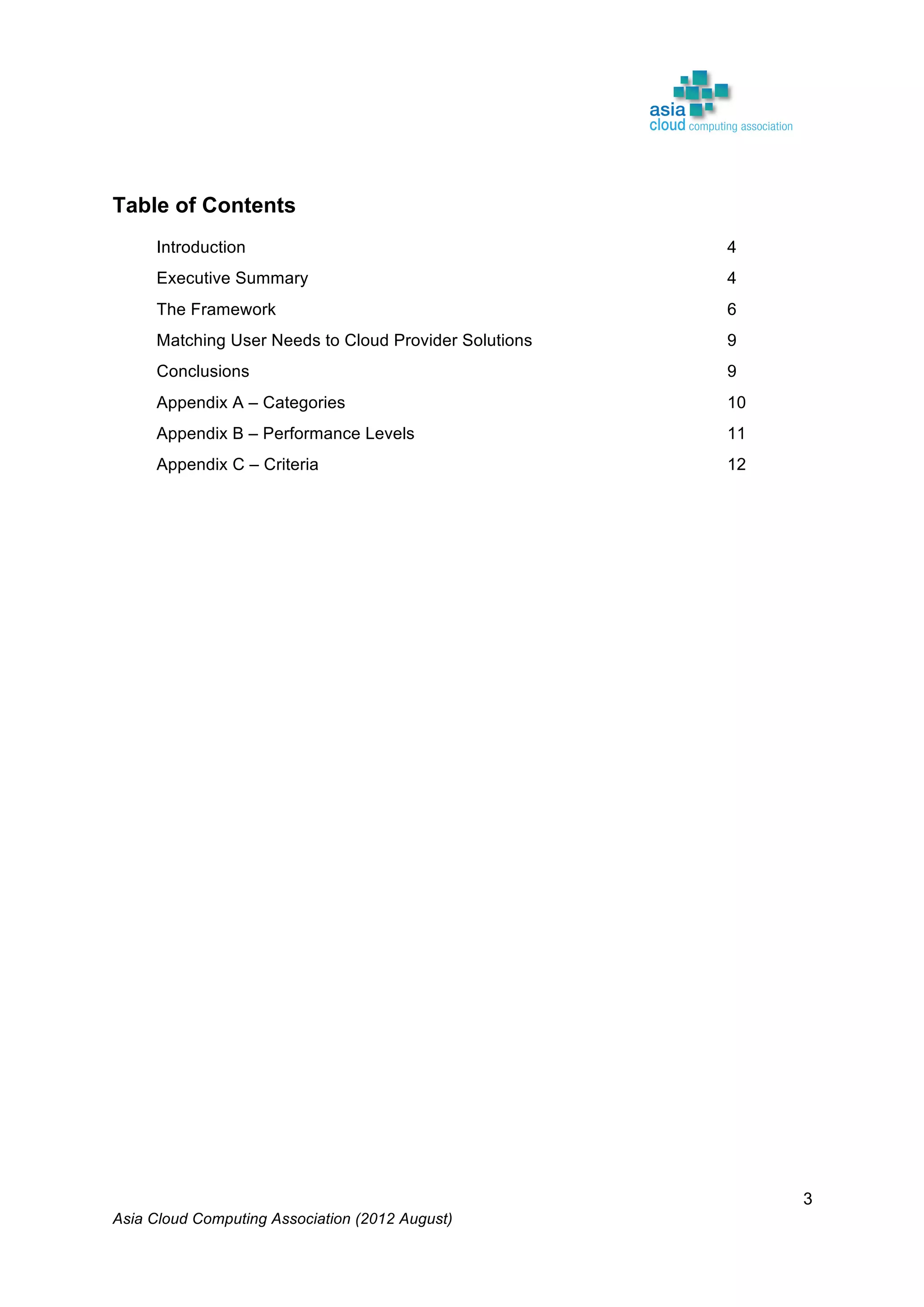
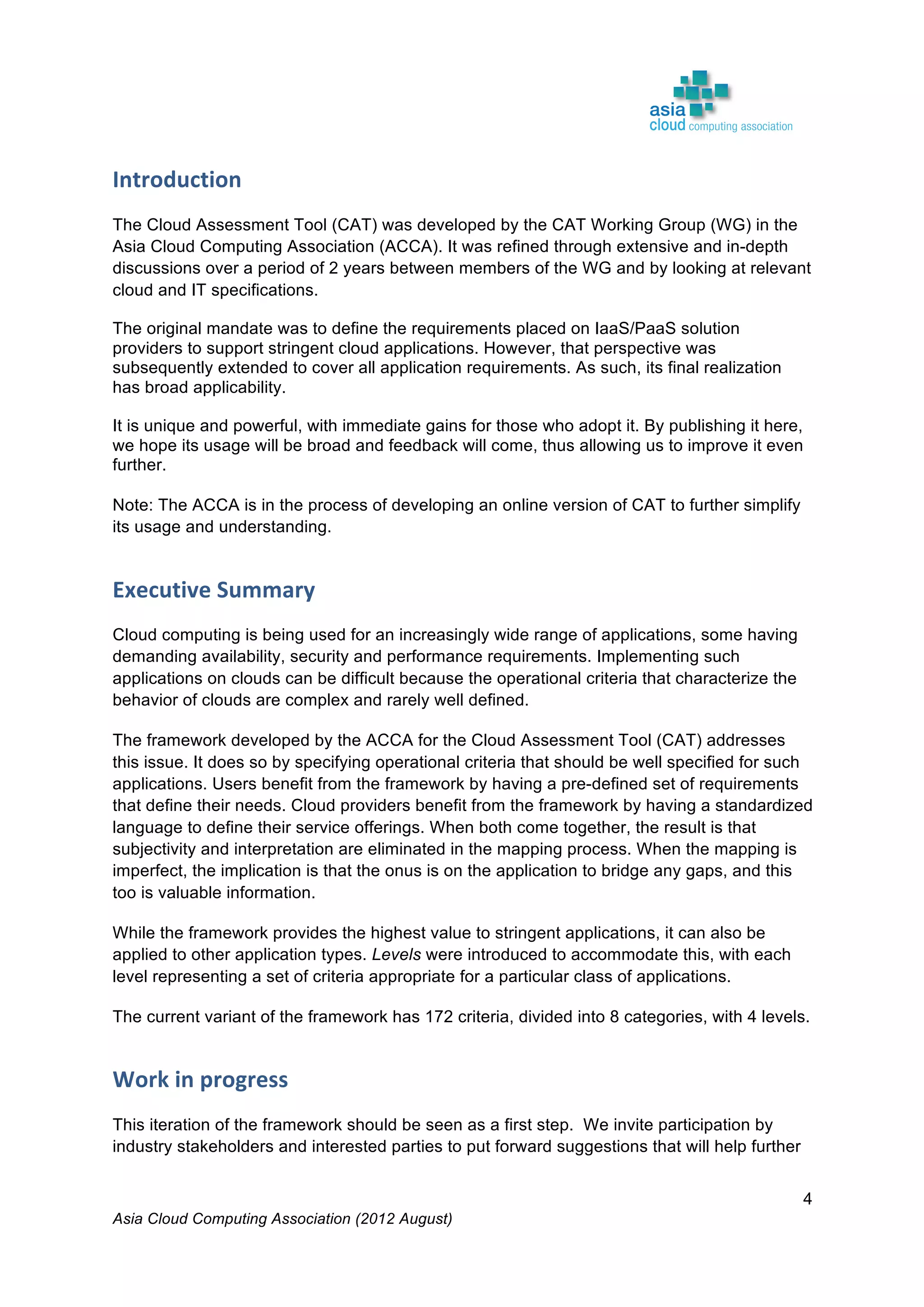
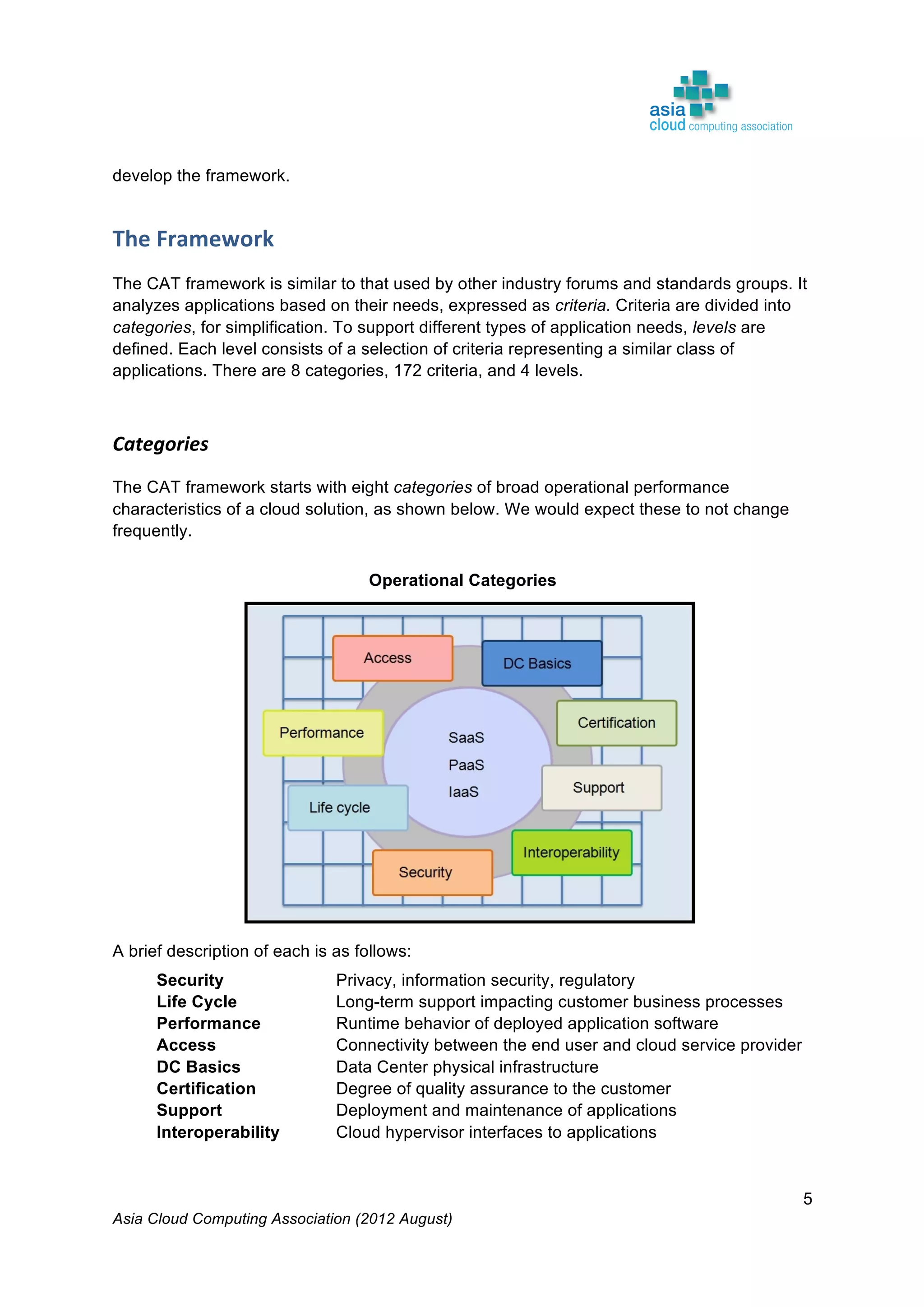
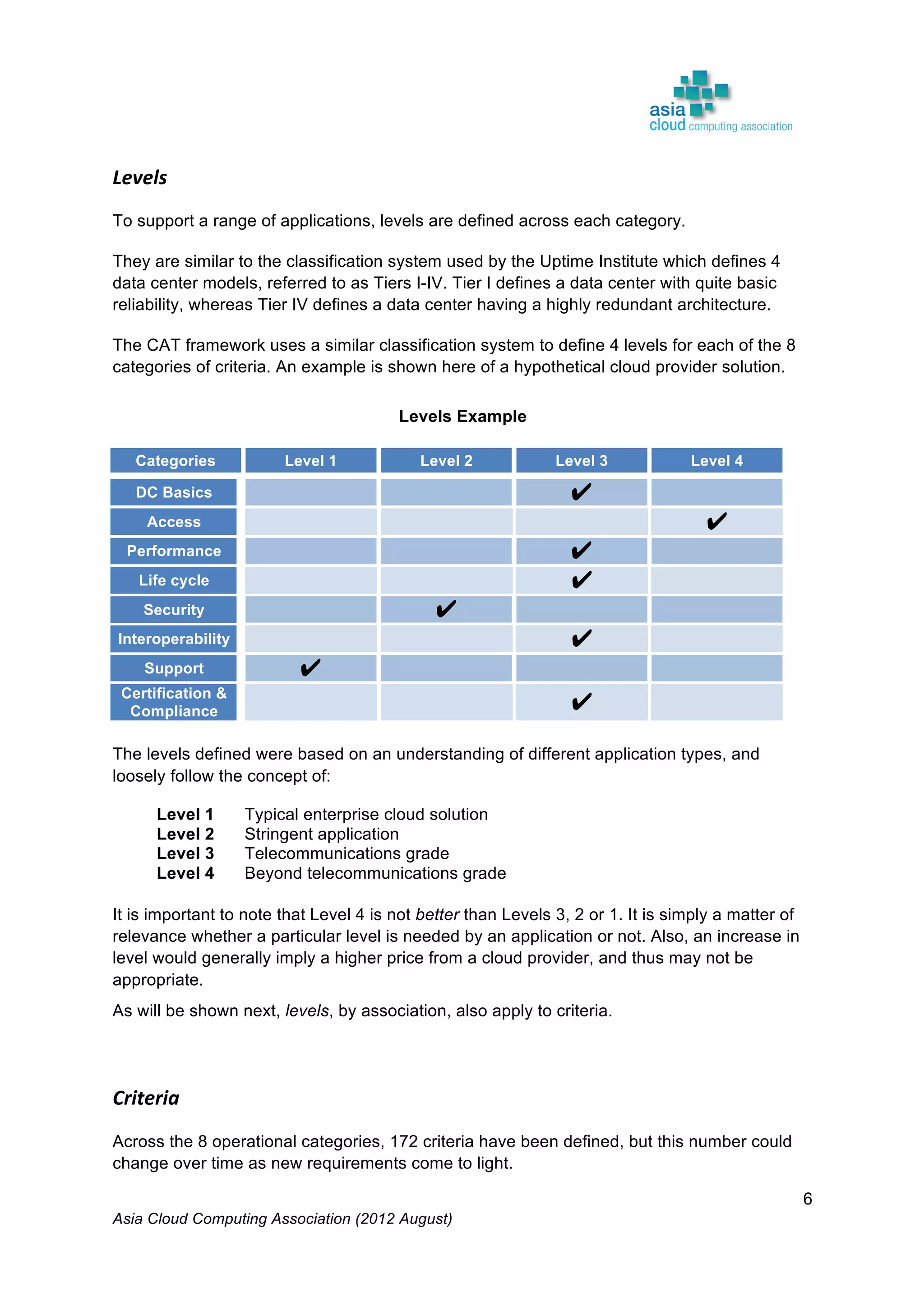

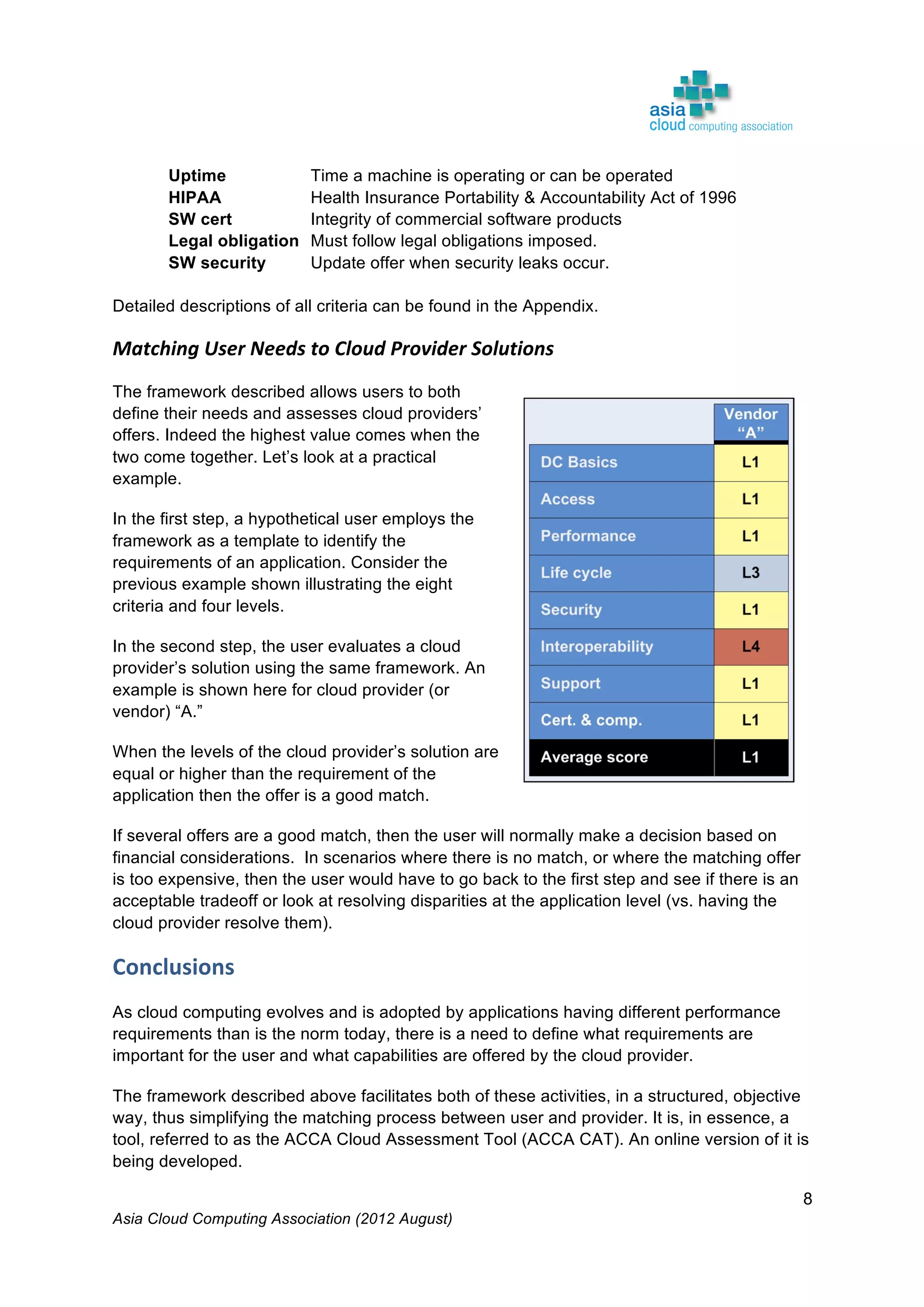
![Asia Cloud Computing Association (2012 August)
9
References
[1] http://uptimeinstitute.com/
[2] DMTF for OVF
[3] DMTF Virtualization Management (VMAN) (http://dmtf.org/standards/vman)](https://image.slidesharecdn.com/2011-accacloudassessmenttoolwhitepaper-200211041331/75/2011-2012-Cloud-Assessment-Tool-CAT-White-Paper-9-2048.jpg)
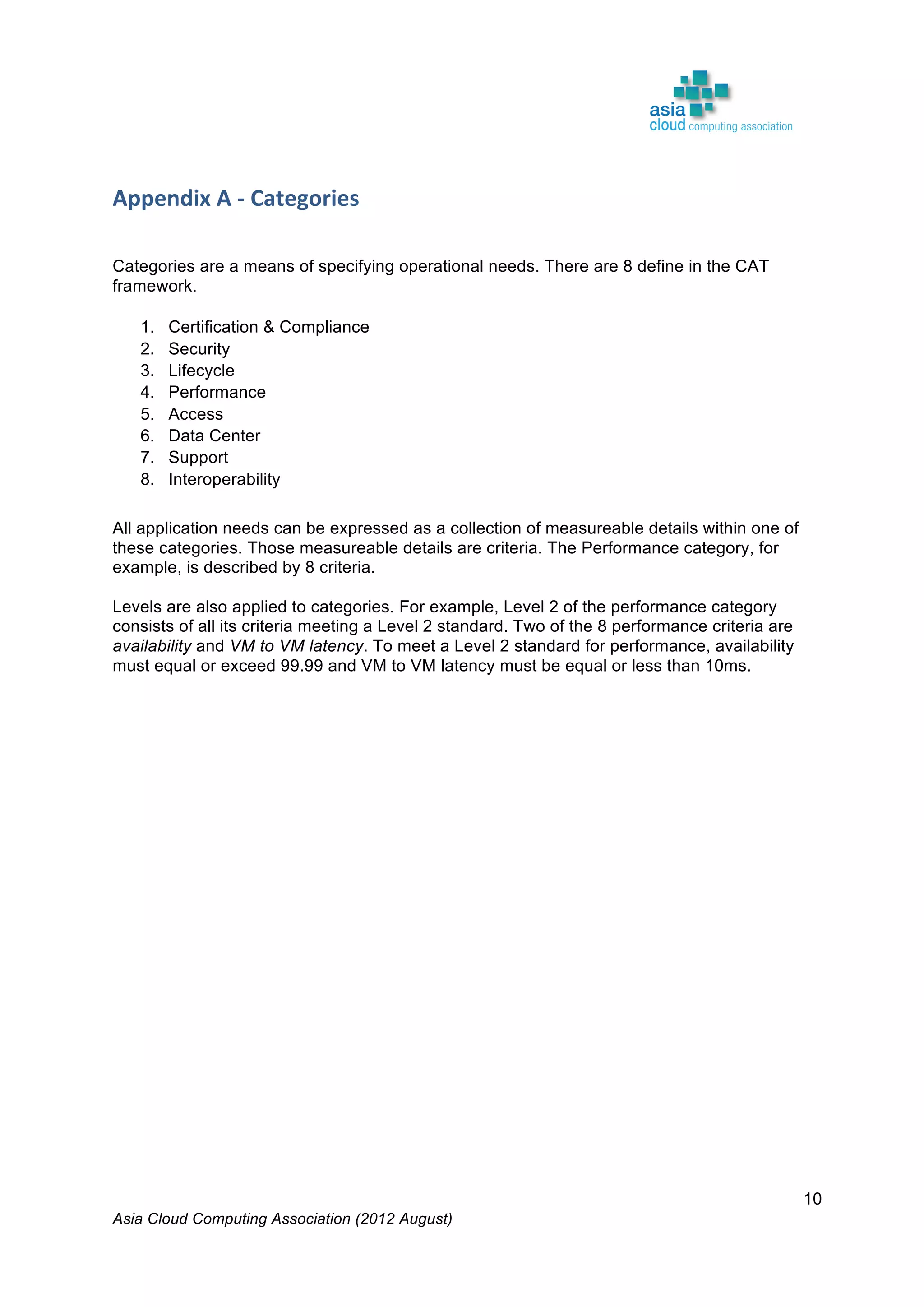
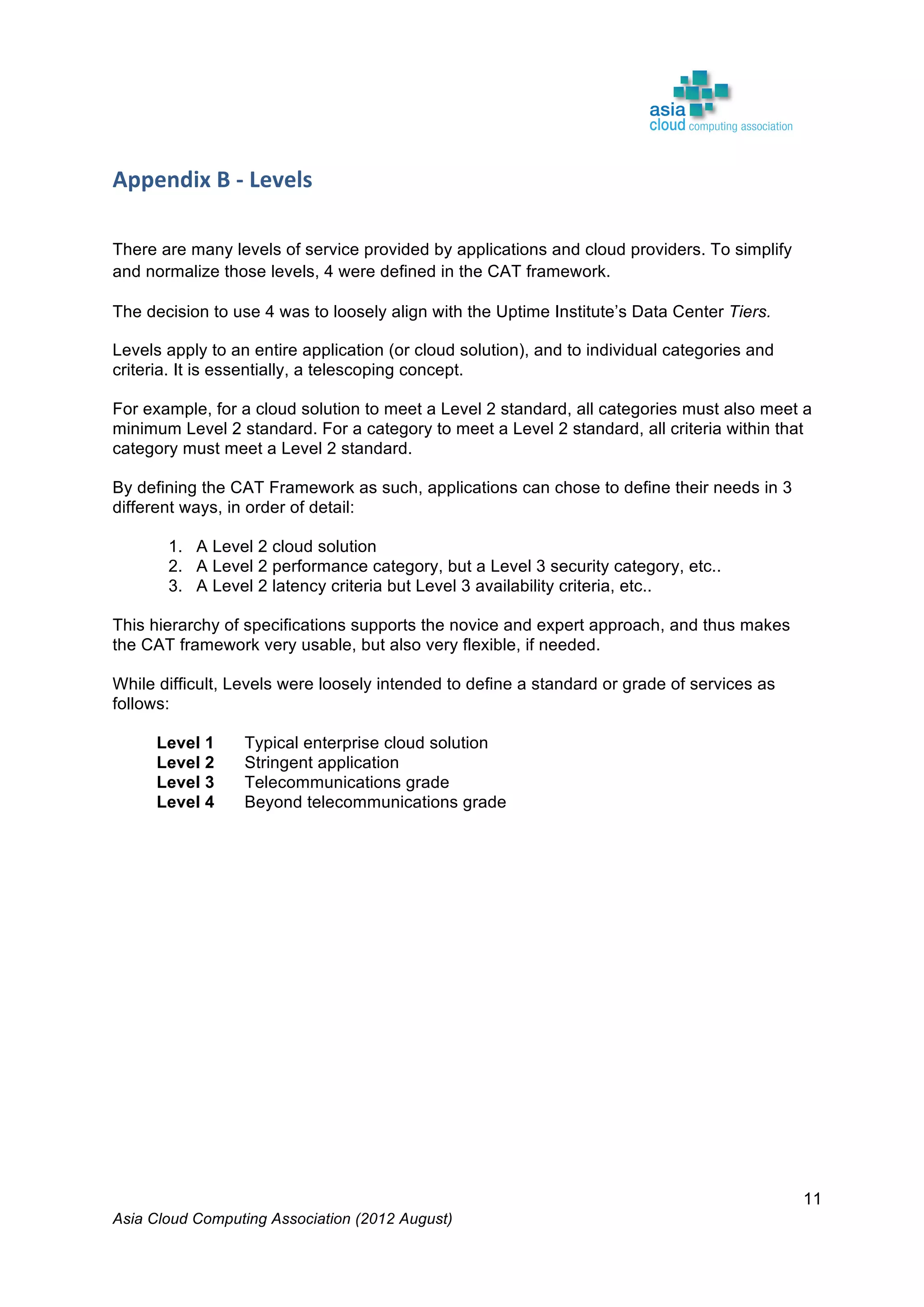
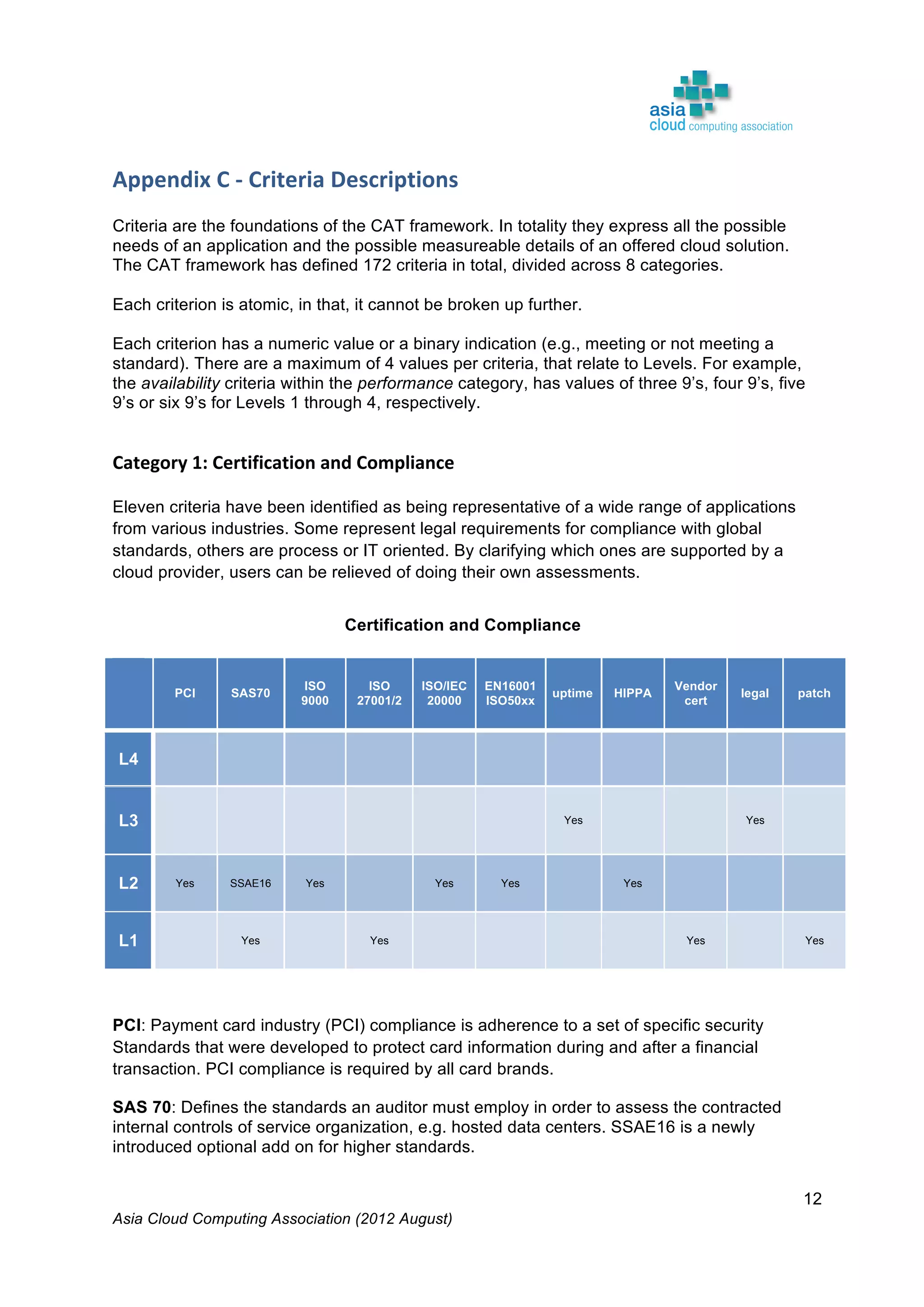
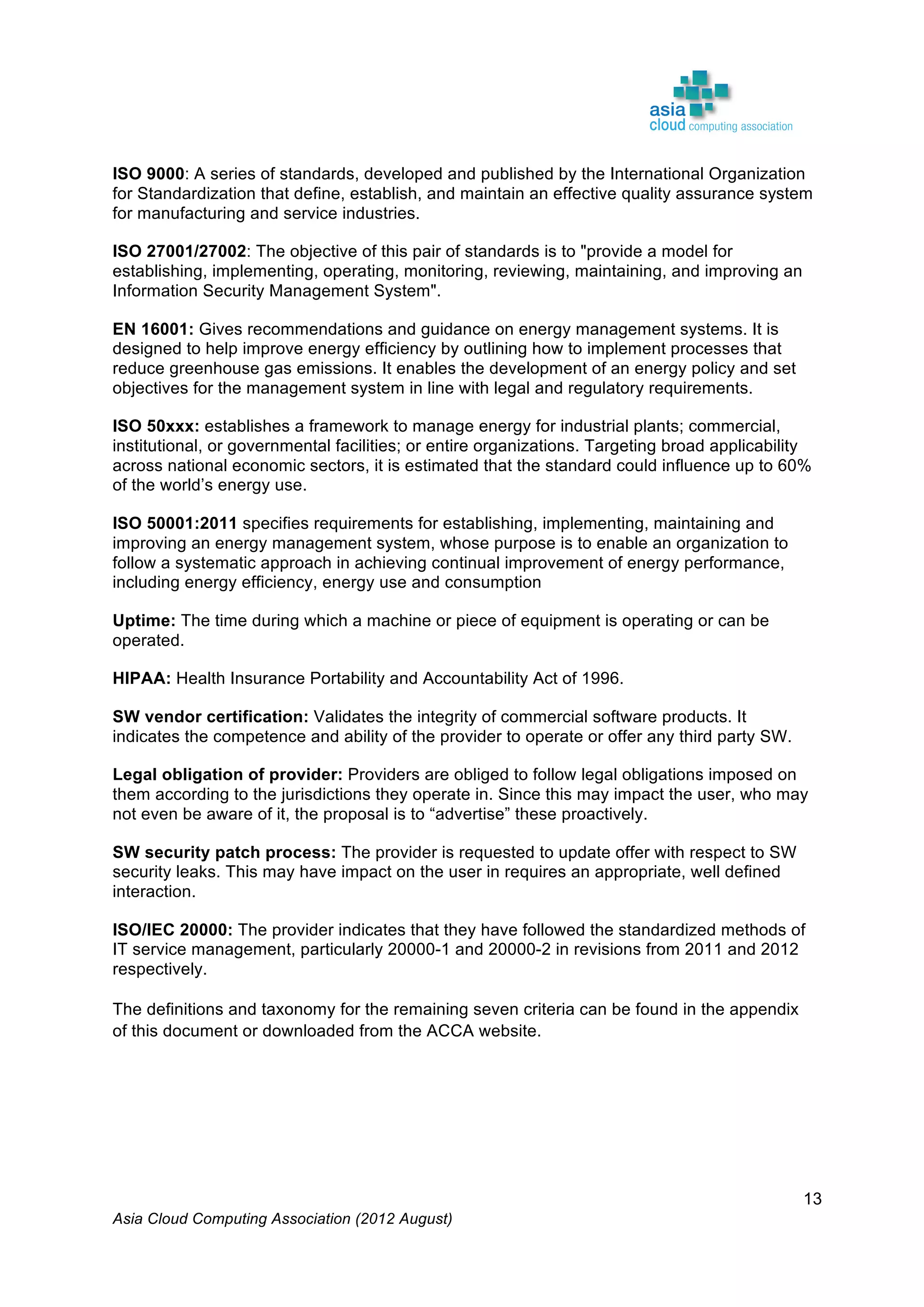
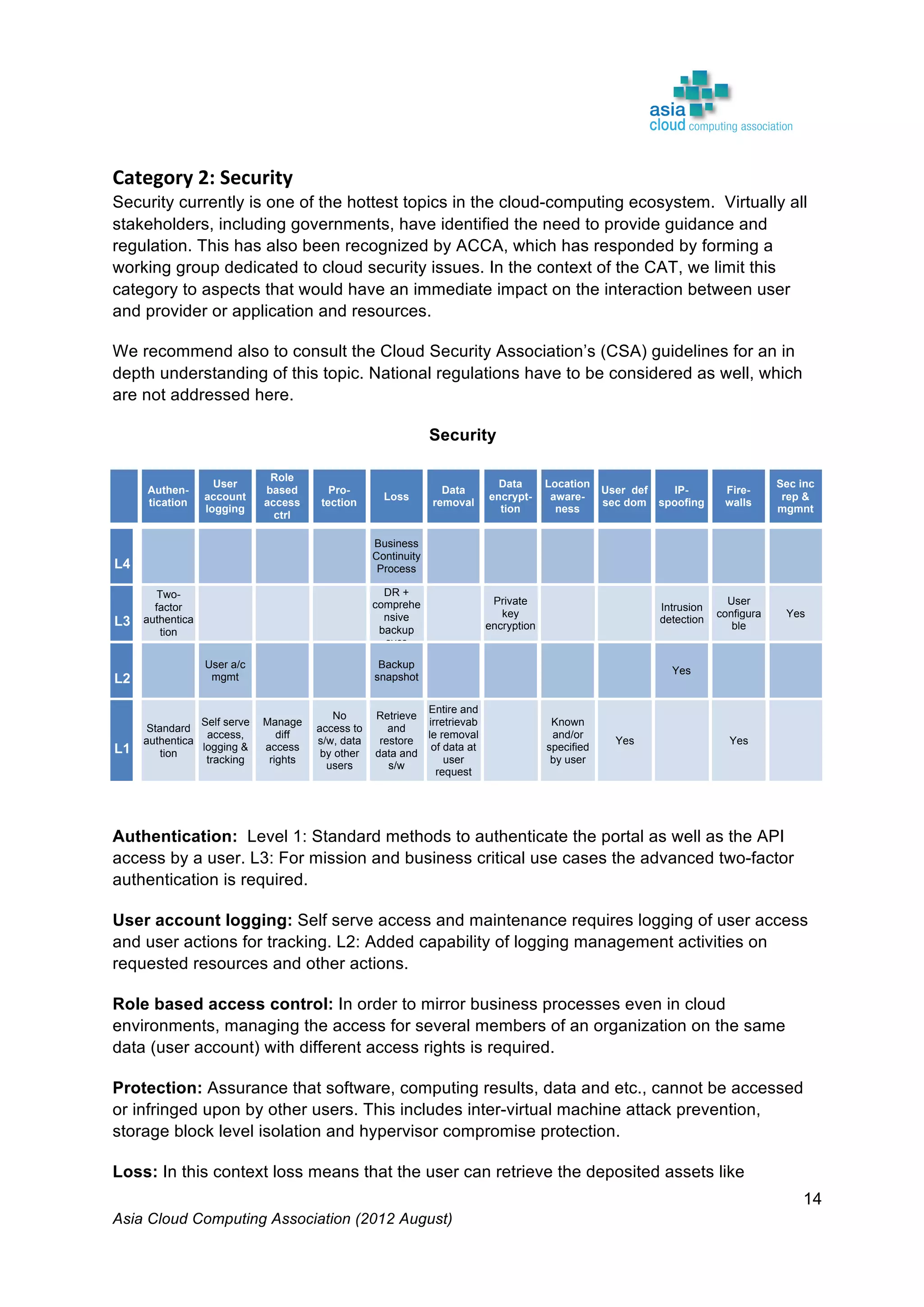

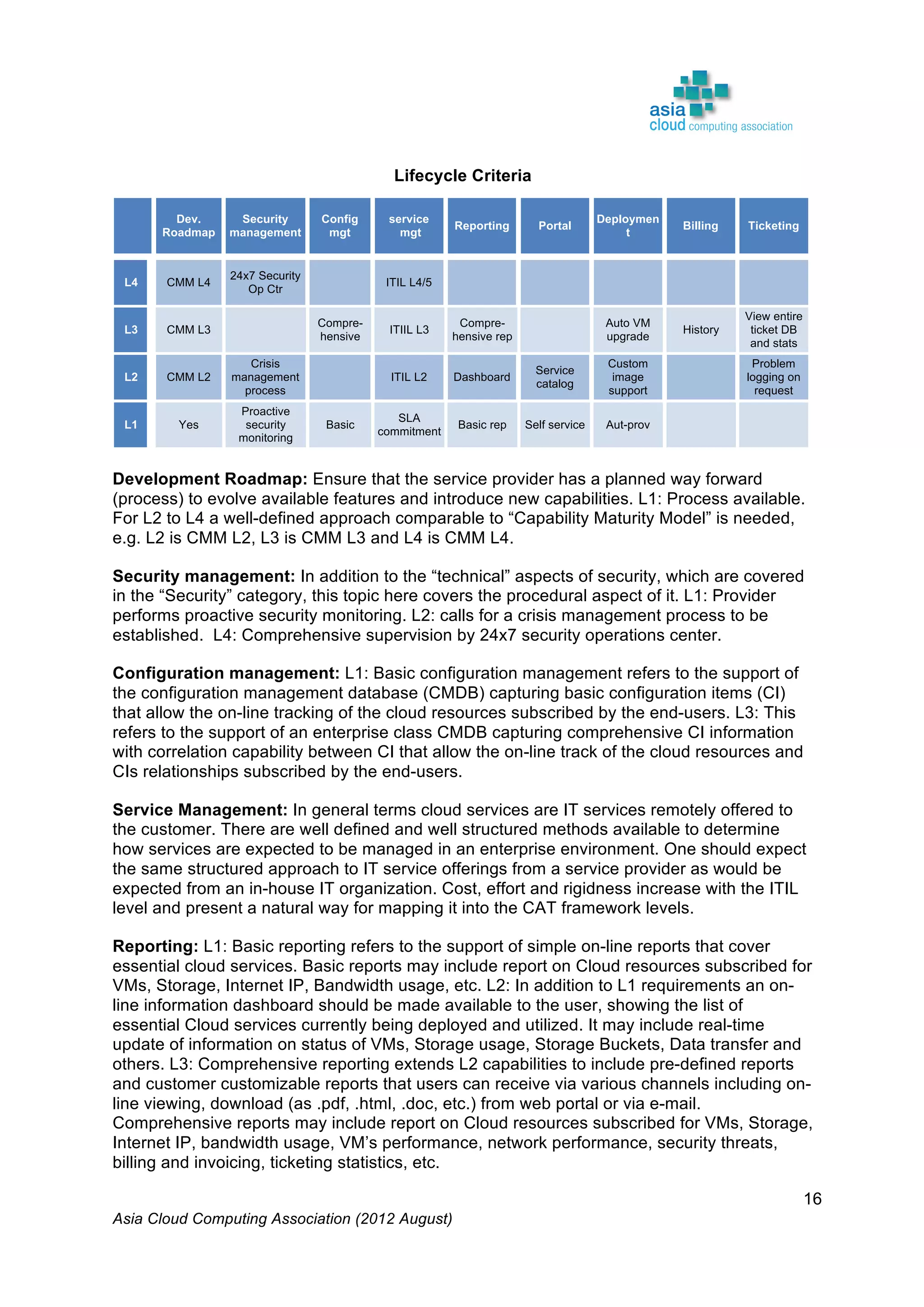
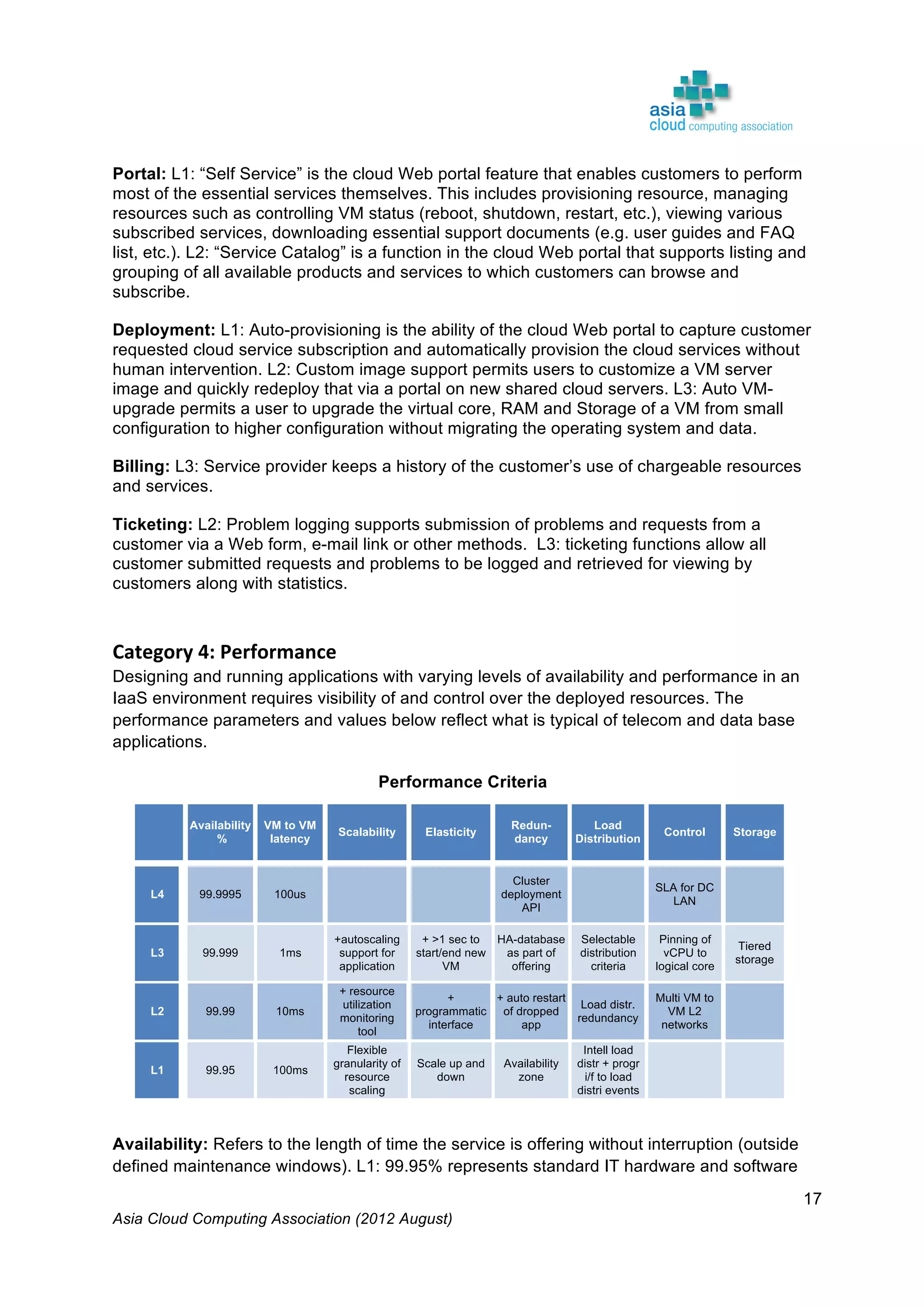
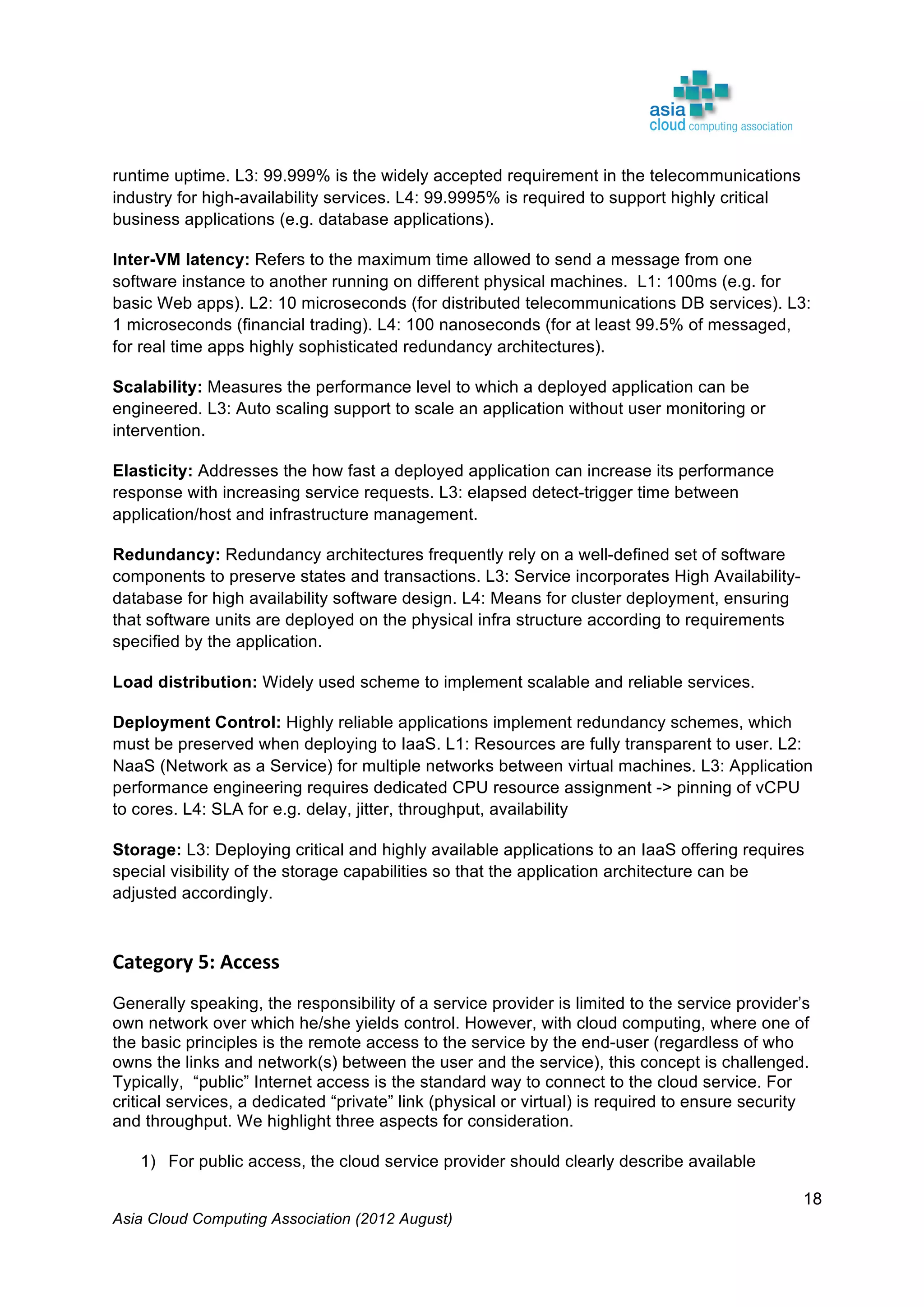
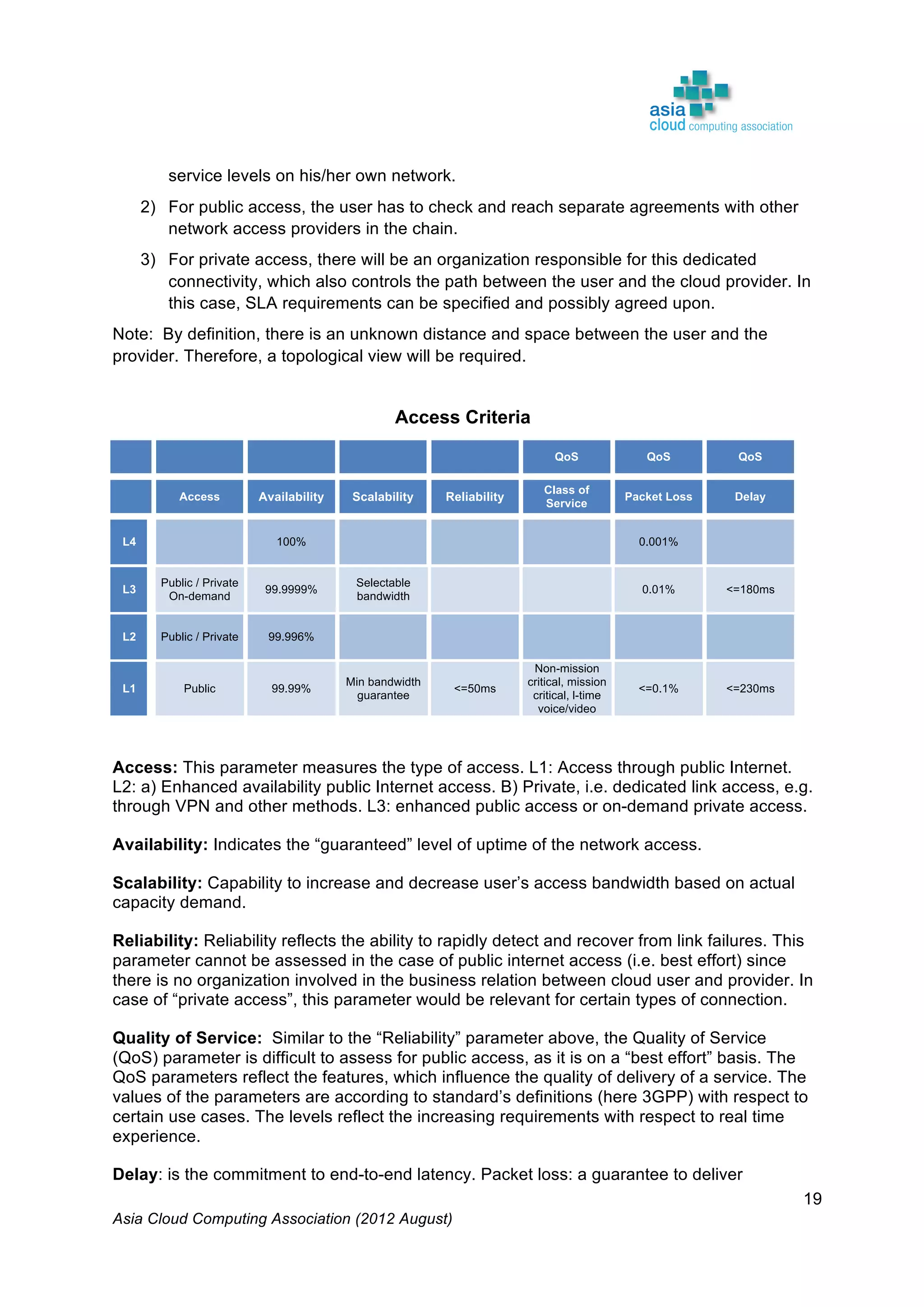

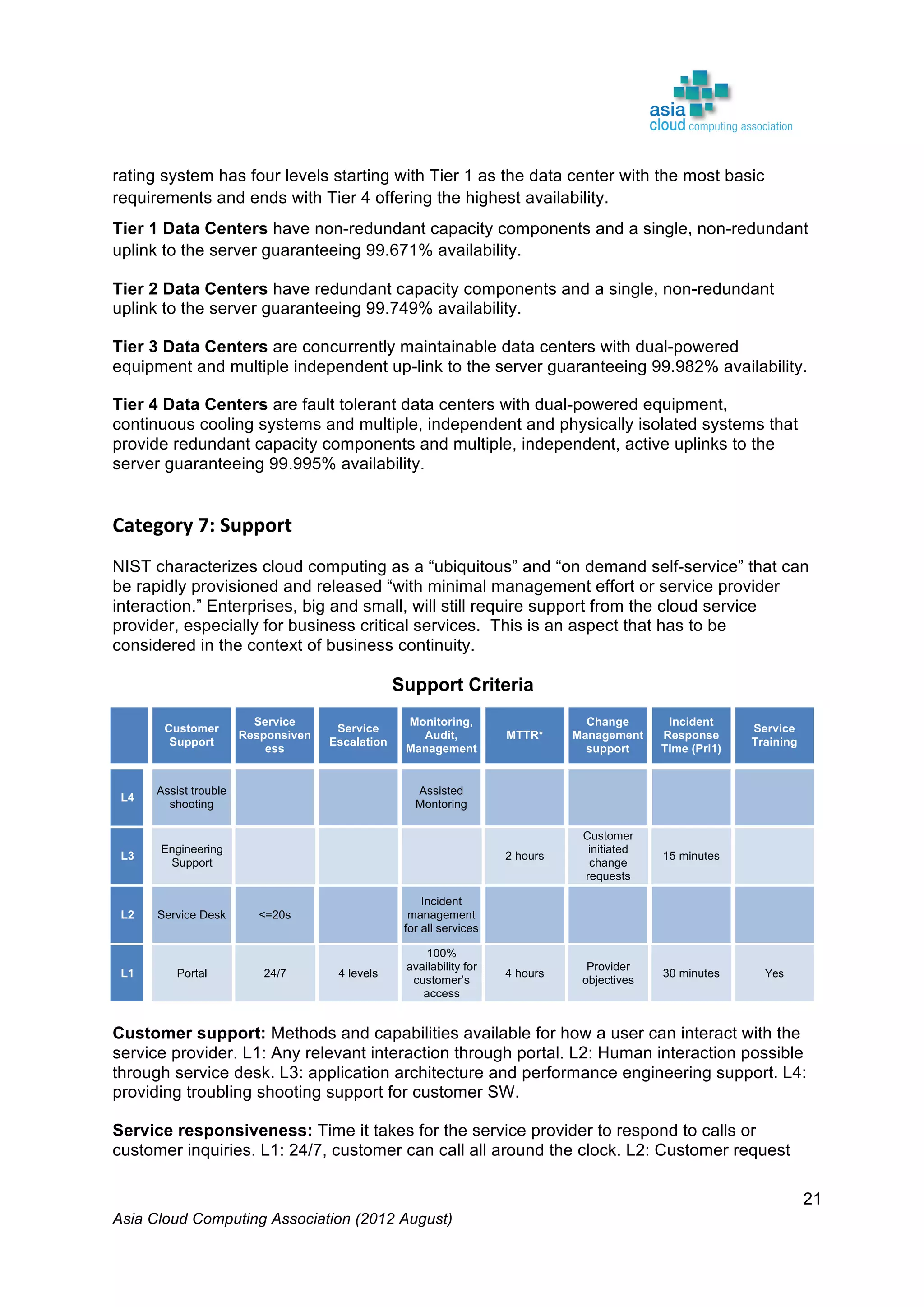
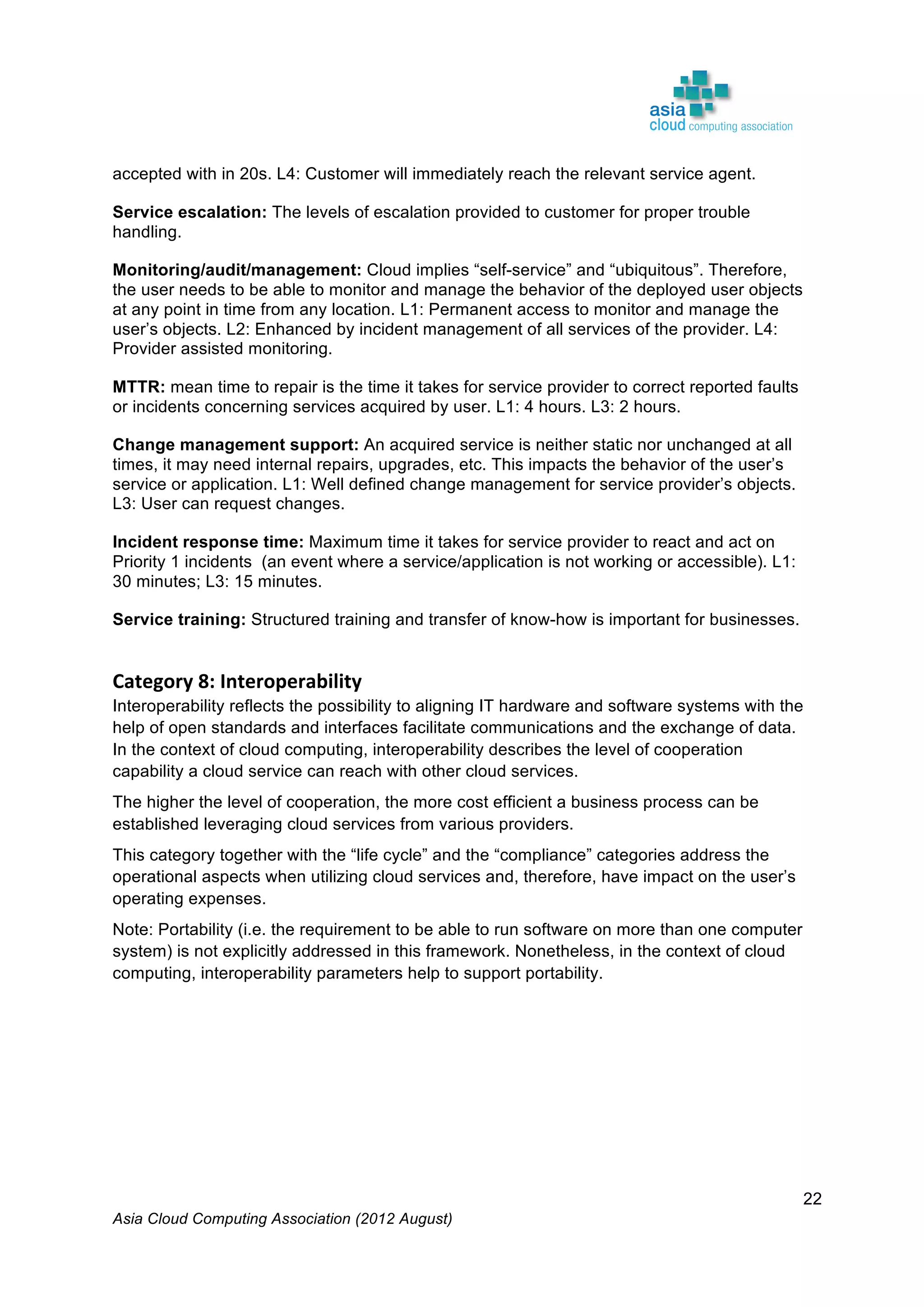
![Asia Cloud Computing Association (2012 August)
23
Interoperability Criteria
Download
Format
API
Access
Device
Life Cycle
Monitoring
Data
IDM
Virtual
Management
L4
L3
Non provider
specific
Any browser DMTF
Complex
Monitoring
tools
L2 OVF Open client Standard DMTF
L1
Provider
specific
Customized
Download format: This represents the format of the objects to be transferred into the
provider’s infrastructure. L2: DMTF [2] has developed a standard format called “open
virtualization format” (OVF) which eases the federation across several offerings.
API: L1: The programmatic interfaces to request and monitor resources, to deploy and
manage applications, mirror the feature differentiation as well as the fast innovation cycles of
the service offerings. L3: Standardized API will reduce complexity and cost on the user side
whenever several cloud services have to be combined or utilized.
Access device: L1: Vertically integrated service solutions may benefit from specialized or
customized access devices. L2: For consuming any application as a service, standard
methods for access are needed (“open client”). L3: For anywhere (e.g. mobile) and any
device (e.g. BYOD) access a fully open access (any browser) is needed.
Life cycle: The user needs to integrate the requested services into the IT management
processes and applications/services. L3: DMTF developed recommendation [3] allowing
consistent life cycle management of different services.
Monitoring data: Any applications deployed in IaaS or PaaS environments must be
monitored and managed by the user. L3: For business critical applications a comprehensive
set of data (and appropriate monitoring capabilities) should be provided in standardized
formats to enable import in user’s monitoring tools.
IDM (Identity Management): Service providers must have a way of handling the identity of
the user and the user must integrate the IDM of the outsourced service into their IT
infrastructure. L2: There are many ways to address IDM. For interoperability reason an IDM
system based on available standards is recommended.
Virtualization environment management: The user may need to integrate the requested
resources into their IT management processes (especially for IaaS). L2: DMTF developed
recommendation allowing consistent integration of several services.](https://image.slidesharecdn.com/2011-accacloudassessmenttoolwhitepaper-200211041331/75/2011-2012-Cloud-Assessment-Tool-CAT-White-Paper-23-2048.jpg)